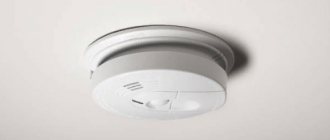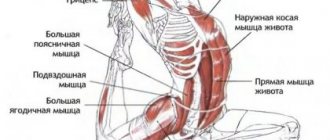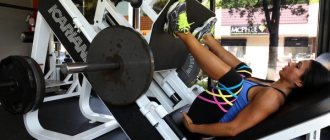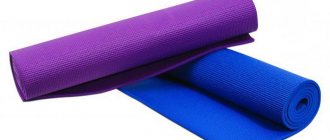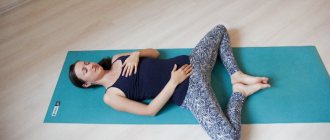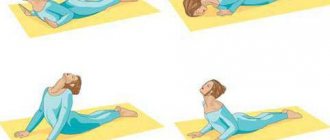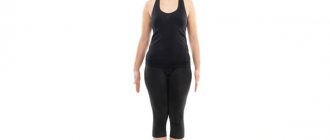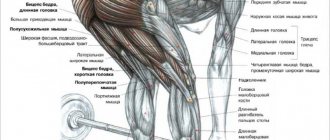Full yogic breathing is the basis needed to perform almost any pranayama. This is essentially pranayama, which trains all the major respiratory muscles. With regular practice, you will train yourself to breathe correctly on an unconscious level. Moreover, this exercise requires very little time. The article will help you step-by-step master the correct technique for performing three-stage yogi breathing.
Benefits and contraindications
Breathing is easy; this vital process does not require any effort on our part. We never forget that we need to breathe, but we don't always do it correctly. Some breathe only with their chest, some with their stomach, some with their mouth instead of their nose. Practicing full yogic breathing will eliminate all your breathing deficiencies.
In addition to “accustoming” to proper breathing, during this pranayama the volume of inhaled air increases 4-5 times. During normal everyday breathing, we breathe shallowly and consume about half a liter of oxygen. With full breathing of yogis, this volume increases to 2.5-4 liters (depending on training and characteristics of the body).
Benefits of the practice:
- congestion in the lungs is eliminated;
- toxins are eliminated;
- metabolism accelerates;
- strengthens the heart and normalizes blood pressure;
- internal organs are massaged using the diaphragm;
- the mind calms down.
But there are very few contraindications - these are serious pathologies of the respiratory organs or heart. You should also refrain from practicing if you have an abdominal hernia.
Pranayama - breathing exercises
I would like to offer you some breathing exercises called Pranayama.
But we will not study the complex techniques that exist in yoga. We will learn very simple practices, but very effective.
I want to start with proper breathing. Proper breathing should involve all 3 parts of the lungs - lower, middle and upper.
In everyday life, we often breathe incorrectly, especially women breathe only with the upper part of their lungs. The lower one is practically not used. Therefore, toxins and waste substances accumulate in the lower part of the lungs. Therefore, you need to use the entire volume of your lungs.
These simple breathing techniques and proper breathing will help us:
- increase lung capacity
- cleanse the blood
- increase your immunity and overall body resistance.
This is all especially relevant at this time to resist viruses.
https://youtu.be/H-yHMdiGpR0
Execution technique
Full yogic breathing pranayama is quite easy to learn. But if you are new to yoga, then you should break the learning process into stages and concentrate on correctly .
Body position, asanas
According to yoga “standards,” three-frequency breathing should be performed in the lotus position (padmasana). But for beginners this pose is most often inaccessible. Therefore, for initial mastery, sukhasana (in Turkish) or shavasana (lying on your back in a relaxed state) is quite acceptable. The main condition is that the spine must be straight.
It is better to choose sitting poses (asanas). Savasana can be chosen to perform full yogic breathing if you are a complete beginner and cannot sit comfortably with your legs crossed. By the way, you can place pillows or a folded blanket under your buttocks. This significantly increases comfort and helps keep your back straight for a longer time.
Preparation and training
Correct yogic breathing consists of three parts or stages:
- abdominal or diaphragmatic breathing;
- chest breathing;
- clavicular breathing.
Preparation consists of working on each of the stages separately. This will allow you to feel well your sensations in the body at each stage and perform the practice as correctly as possible. Let's start in order.
Abdominal breathing
Sit or lie down in the asana you have chosen to perform the exercise. Start breathing from your belly, concentrate only on it. Feel how when you inhale, your stomach rounds, and when you exhale, it approaches the spine. Do this calmly, without any extra effort on yourself.
Relax your face and whole body and simply breathe calmly through your belly. Feel how your diaphragm expands and creates light pressure on your internal organs. Devote 5 minutes to this workout and move on to the next step.
Chest breathing
Now bring all your attention to the chest area. To complete the sensations, you can put your hands on the sides of your ribs and close your eyes. Forget about your stomach and breathe only from your chest. Feel all the muscles that are used during chest breathing.
Try to take deep breaths to expand your chest as much as possible. Five minutes will also be enough for this stage.
Clavicular breathing
This type of breathing is the most difficult to feel and realize. During everyday shallow breathing, the clavicular is practically not used. This is why stagnation of “old air” occurs in the upper parts of the lungs.
To use clavicular breathing, you need to inhale as deeply as possible. Try to breathe even deeper, even if you feel like you can’t breathe anymore. The indicator will be the clavicle bones and shoulders. They will rise slightly when you inhale, and fall when you exhale.
Spend 10 minutes with clavicular breathing to really get a feel for the top of your lungs.
How to breathe correctly: a few recommendations
In order to learn to breathe using proper belly breathing, the reader will have to immerse himself in the world of the ancient spiritual practice of yoga. Many schools teach how to breathe correctly, but so far they have not invented anything more natural for the human body and its development than the breathing practices of yogis.
Many other techniques that call for correct breathing and claim that it is their technique that will help you master the so-called correct breathing, in fact, are nothing more than a derivative product of the yoga school. They, of course, will not say anything about this to an inexperienced adept, who will remain in the dark as to the origin and basis of the techniques that he will study. But why use surrogate techniques, burdened with new techniques in order to give them originality, if the necessary ones have already been invented, and they are perfectly suitable for the human body. Let's turn to them and study the original source, and not a rewritten and revised essay.
Yoga is the first remedy that people resort to when they want to learn how to breathe correctly. Why do people choose yoga? Because it was in the spiritual teachings of yoga, even before our era, that Patanjali expressed his ideas regarding holistic human development.
He built the system comprehensively, arranging its steps in the order that is most optimal for the organic development of the human essence, starting with the training and practice of moral laws, moving on to the development of the physical body through the performance of asanas and gradually proceeding to practices of a purely spiritual order, such as dhyana and samadhi, through the preceding pranayama, pratyahara and dharana.
Each step of the 8-step Ashtanga Yoga system developed by Patanjali leads harmoniously and correctly to the next. Therefore, before you start practicing breathing exercises, i.e. pranayama, it is recommended to remember and even better perform the practices of yama, niyama and asana. It is precisely due to the fact that in this system the transitions from one practice to another are logically thought out, you can safely rely on it and follow in your spiritual and physical development, relying on the recommendations given by the teachings of yoga.
pranayama, meditation, practice in nature, Anastasia Isaeva
Before we move on to consider the breathing exercises that are presented in pranayama, it should be noted that the full breathing itself, which is mastered at the first stages of learning the practice of asanas in hatha yoga, is already a preparation for pranayama, because in many pranayama you will need to use full yogic breathing. Introducing the teachings of yoga through the practice of asanas sets a good start for further immersion and study of yoga breathing techniques.
Full yogic breathing teaches how to breathe correctly from the diaphragm
Through mastering full yogic breathing, you will learn to use the diaphragm in the breathing process. The fact is that usually the average person, not familiar with the teachings of yoga, literally breathes as needed. If he also has a stressful job, and now many people do, then once he gets into the race at the beginning of the day, he won’t turn off until the evening. Hence it turns out that in the very morning, succumbing to stress, a person begins to breathe shallowly and quickly. This is how we usually breathe when we are frightened by something, so the abdominal region is not included in this type of breathing.
Mainly thoracic and clavicular breathing is involved, which does not allow the lungs to fill with oxygen. Of course, oxygen passes into the upper and middle sections of the lungs, but it does not go further to the lower section. In order for the lungs to be completely filled with O2, it would be necessary to engage in abdominal breathing, but the person is tense, and his lower body is in the same state. It turns out that you can forget about proper breathing, and also about filling your lungs with oxygen 100%.
How to breathe properly for a person
For proper breathing, a person must connect all three types of breathing:
- abdominal,
- chest,
- clavicular
This type of breathing is known as deep breathing or full yogic breathing. In order not to tell only one theory, we ask the reader right now, after reading this paragraph, to stop and test for himself in practice what it means to breathe with only one type of breath. Then you will understand how we deprive ourselves by using only one section when inhaling and exhaling - the clavicular, thoracic or abdominal.
Right now, tense up and imagine that you are afraid, or think about something really unpleasant for you, and now observe which parts of the body are in motion when you inhale and exhale. Surely it was the clavicular region, that is, the shoulders rise and fall slightly, while the chest does not even expand. If the thoracic region were involved in the work, this would mean that you connected chest breathing, but when a person experiences stress or fear, he is so constrained that he does not even breathe through the chest. That’s why they say it when they want to encourage a person to take a deep breath.
pranayama, meditation, practice in nature, Andrey Verba
Now do the opposite: think about something very pleasant, about a successful vacation or vacation when you really felt very comfortable, awaken the memory of that moment and mentally transport yourself there. It will be even better if you do this experiment while sitting in a chair. This is where you will notice how the abdominal region comes into play. You really feel relaxed.
Complete order of execution
Now you are ready to perform the full three-frequency yogic breathing. We combine the previous three stages into one cycle:
- sit/lie down in an asana that suits you;
- close your eyes and take a few calm breaths;
- exhale completely;
- start inhaling from the stomach, as in the first stage of training;
- Continue inhaling smoothly, expanding your chest;
- reach clavicular breathing and begin exhaling in the reverse order;
- the collarbones immediately drop, exhale through the chest and draw in the stomach;
- repeat the cycle again.
Yoga: belly breathing
The next important stage in mastering yogi breathing is proper breathing with the stomach (diaphragm). In this case, we activate the diaphragm and the ribs move minimally.
The diaphragm is a bulbous muscle that separates the lungs and the abdominal cavity. When it works correctly, we breathe optimally. The ability to feel and control the diaphragm muscle will come with practice.
During inhalation, the diaphragm moves downward, pushing the contents of the abdominal cavity down and out. During exhalation, it rises, lifting and drawing in the internal organs.
Why is this necessary?
Using the diaphragm when breathing allows you to use the lower lobes of the lungs. The alveoli expand evenly, lymphatic drainage from the basal parts of the lungs improves, the liver, stomach, intestines and other organs that are located directly under the diaphragm are massaged. It has a positive effect on the functioning of the heart and the blood supply system, improving blood flow and oxygen exchange.
Belly breathing is the most natural and effective type of breathing. Why don't we usually breathe like this? The cause should be sought in stress, poor posture, tight clothing and lack of physical activity. But once we start belly breathing again, our mental and physical health improves significantly.
Belly breathing: technique
Lie on your back in Shavasana pose. Relax completely.
Direct your attention to free and natural breathing, but do not try to control it. Let it flow unhindered as it is.
After a while, place the palm of your right hand on your stomach, just above your navel, and your left palm in the center of your chest.
The right palm will move up as you inhale and down as you exhale. There should be no tension in the stomach. Don't force his movements. As you breathe, simply feel your belly expanding and contracting in rhythm with your inhalations and exhalations. Try not to expand your chest or move your shoulders.
Continue to breathe slowly and deeply. Inhale, expanding your belly as much as possible without affecting your chest. In the final phase of inhalation, the diaphragm will press on the abdomen, and the navel will be at the highest point of ascent.
As you exhale, the diaphragm rises toward the lungs and the abdomen descends (retracts).
At the end of exhalation, the abdomen contracts and the navel moves towards the spine.
Image Source: Bihar School of Yoga
Do this breathing exercise for 2-3 minutes.
When and how much to do
For the first few days, practice 10 cycles of full yogic breathing 2 times a day. Over the course of two weeks, increase the duration of one workout to 5 minutes. When a five-minute session does not cause any difficulties (fatigue, dizziness), also gradually reach 10 minutes per approach.
The best time to practice full yogic breathing is in the morning before meals and in the evening before bed. There is no point in studying for more than 10 minutes at a time. Regularity is much more important than duration. Create a habit for yourself - practice every day. And you will feel the result in the form of better health and well-being within a month.
Clavicular breathing
This is the final stage of full expansion of the chest - it is used when air has already filled the entire chest area (see the previous type of breathing). In order to force a little more air into the lungs, we raise the upper ribs of the chest and collarbone. Thus, the upper lobes of the lungs are filled with fresh air.
In everyday life, clavicular breathing occurs only with excessive physical stress, as well as with obstructive airway diseases (such as asthma).
Technique
Lie down in Shavasana and relax. Perform chest breathing for several minutes.
Inhale, fully expanding your chest. When you have reached the maximum in its expansion, inhale a little more until you feel expansion in the upper part of the lungs, at the base of the neck. At the same time, your shoulders and collarbones also rise slightly. It may take some effort at first to get it all going.
Exhale slowly, first lowering and relaxing the upper chest, then the rest of the chest. Repeat several times, observing how such breathing makes you feel.
Recommendations
- Remember that yogi breathing is an exercise. You shouldn't constantly force yourself to breathe this way. Give this practice a conscious 20 minutes a day (10+10), your body will do the rest.
- The entire cycle of inhalation and exhalation should occur smoothly, without jerks or delays. The deepest continuous breathing cycle possible.
- The muscles of the body, face and neck should be relaxed. There should be no discomfort.
- Keep your focus inward, concentrating on the breathing process.
The more you control your breathing, the better you will be able to control your mind. Full yogic breathing is necessary for the effective performance of many pranayamas. But this does not detract from its merits as a separate independent practice. A simple exercise that ventilates the lungs, increases oxygen levels in the blood, teaches you to control your breathing and eliminates poor breathing habits.
Read: 4,350
How to learn to breathe correctly. How to breathe correctly with your stomach
Of the three types, abdominal breathing, or belly breathing, is the most natural for a person, and from a physiological point of view, it helps the body relieve tension, because the diaphragm begins to work, and when it is used, excess stress is automatically removed from the heart muscle. That is, the benefits of abdominal breathing are great, but it’s even better if you learn to include all three types of breathing.
In order to learn to breathe correctly
, you must learn full yogic breathing - this is the first point of your practice. Once this is done, you can begin to practice pranayama. Many of them are quite simple and have a beneficial effect on the respiratory system, and are also good as a basis for meditation practice, but more on that later.
A lot has been written about how to breathe from the belly correctly, but in fact it is quite simple. When you were experimenting and remembering pleasant images from your past, you must have noticed that when you relax, and especially in a sitting position, the breathing immediately becomes deeper, the shoulders drop, the chest muscles are released, and the stomach is involved in breathing .
The practice of full yogic breathing is ideal for teaching yourself to breathe from the belly. Gradually this will become a habit, and you will begin to include abdominal breathing even when you are not practicing yoga; Over time, you will make this type of breathing your natural state. You just need to not give up and practice.
How to breathe correctly
“How should you breathe correctly?” is a question that can be heard more and more often from people. The topic is not only popular, it is truly urgent, because not only the process of gas exchange between oxygen and carbon dioxide, but also many processes of the internal organs depends on breathing. As, for example, it has already been said, with the inclusion of the diaphragm in the work, the load on the heart is removed, not to mention the fact that during abdominal breathing other organs are massaged, i.e., a natural massage of the internal organs occurs.
pranayama, meditation, practice in nature
Of course, you need to practice various types of pranayamas and full yogic breathing, but in the process of practice you should not get carried away and spend hours doing only pranayama. “Why shouldn’t you do this?” - the reader will ask. Because for most of your conscious life you have been breathing differently. Until recently, you did not seriously devote time to special breathing practices. Therefore, now, if you get down to business too actively, it may bring harm rather than benefit. It is necessary for the body to adapt to new forms of breathing. Remember that they are still unusual for the body, no matter how useful they may be.
Therefore, while performing pranayama techniques, always monitor your well-being. Some pranayamas are specifically aimed at helping to ventilate the lungs, i.e. breathing is very intense, and when you perform such pranayamas, listen to the body. He will tell you when to stop practicing. Do as many breathing cycles or for as many minutes as is comfortable for you, rather than strictly following the directions from books and textbooks.
What is written there sets an approximate temporary direction, but does not mean that you must strictly follow only these recommendations. If the body has not yet adapted to the new breathing rhythm, it is better to stop, take a break, and then you can practice again. However, in general, what I would like to emphasize once again is that breathing is a powerful thing, and therefore you need to work on changing it with caution and thoroughness. Therefore, start practicing with a few minutes a day, only gradually adding time if your physical condition indicates this to you. Performing techniques should be comfortable - this is the golden rule for the practice of pranayama.
The importance of breathing practices in yoga
Breathing exercises have been known to mankind for a long time. Even the ancient Vedic texts say that by establishing control over your breathing, you can gain control over your vital energy and get rid of negative thoughts.
Usually a person breathes unconsciously. Breathing is an action that does not require our constant control. However, those who practice yoga learn to make even this natural process special, deeper and calmer. Over time, a new technique becomes a habit and changes the perception of the world of the practitioner. As a result, the balance of oxygen and carbon dioxide is balanced in the body. If this ratio is violated, oxygen cannot be fully absorbed by the body. In addition, proper breathing uses various respiratory muscles. Usually a person breathes, filling the lungs partially. Yoga teaches you to fill them completely.
Yoga breathing practices help make proper, full breathing a habit.
Most popular practices
Yoga breathing training includes:
- full yogic breathing;
- pranayama (from Sanskrit pranayama - control of breathing).
It's better to practice while sitting. It is important to keep your posture straight and your shoulders at the same level, lowered.
Photo gallery: the best poses for training
To perform the Lotus pose, one leg should be placed on the top of the opposite thigh, bringing the heel closer to the stomach, the other should be placed symmetrically on the opposite thigh
In order to sit in the Perfection pose, the heel of one leg must be pressed to the inner thigh of the opposite leg, as close as possible to the perineum area, and the second leg must be placed on top, pressed against the opposite thigh
To perform Diamond Pose, you need to kneel with the insteps of your feet on the floor, cross your big toes, lower your buttocks onto your heels, placing your palms on your knees.
Full yogic breathing
This type of exercise involves deep inhalations and exhalations.
Inhalation should begin in the abdominal cavity. Then you need to fill the chest area with oxygen, and then the collarbone area. Exhalation is also done in a certain order. First, exhale from the collarbone area, then release air from the chest, and lastly from the abdomen. The whole process should feel like a continuous movement, smooth, gradual, without jerks or sudden movements. You need to exhale air until your lungs feel empty. The pause between inhalation and exhalation should take several seconds.
Depending on how you feel, you need to perform 6–8 approaches. Over time, it is worth increasing the practice time to 10 minutes. Exercise should bring joy, fill you with energy and in no case be performed through force.
For me, such breathing is the best remedy for insomnia. If I can’t sleep, I turn on my back, relax my body from my toes to the top of my head, take a few slow deep breaths in and out... And then I don’t remember!
Video: full yoga breath
https://youtu.be/aXpQ5Ja5luE
Bhastrika
Bhastrika requires some training. Here are its beneficial properties:
- burning toxins in the body;
- increasing “internal fire in the body” (useful for those who are constantly cold);
- establishing a balance of doshas (energies) in the body;
- renewal of blood composition;
- acceleration of metabolism;
- improvement of internal organs, especially those responsible for digestion;
- strengthening, increasing volume, activating the lungs (useful for asthma);
- helps with throat inflammation (“burns” mucus);
- harmonization of the central nervous system;
- gaining calm, vigor, confidence, optimism.
Bhastrika translated means blacksmith's bellows. Like fanning a fire in a forge with bellows, the technique involves strong, forceful breathing that inflates the practitioner's energy.
Step-by-step instructions:
- Take 10 deep breaths in and out first through the left nostril (press the right one with the thumb of your right hand), then vice versa, inhale and exhale 10 times through the right.
- Inhale through the left nostril, close both nostrils, hold the breath for a few seconds, exhale through the left nostril.
- Repeat the same as in the second point, only through the right nostril.
- Do 10 bellows breathing cycles through both nostrils.
- Inhale deeply, close both nostrils and hold your breath again. Exhale slowly through both nostrils.
These five actions constitute one cycle of Bhastrika. You can gradually increase the number of cycles from 1 to 5. You need to increase the number of circles and the time you hold your breath gradually, the practice should be accompanied by a feeling of comfort and pleasure.
Video: Bhastrika breathing
https://youtu.be/KL-3H-G2hhI
Kapalbhati
This technique involves exhaling quickly and forcefully.
Kapalbhati - translated as “cleansing of the skull.”
Practice is useful because:
- restores the activity of the respiratory system;
- cleanses nasal ducts;
- warms the body;
- invigorates, refreshes thoughts;
- activates the pineal gland, or pineal gland;
- restores natural sleep-wake cycles, relieves insomnia, and helps you wake up easily in the morning.
Scientists confirm that when the pineal gland is stimulated, the level of melanin, a hormone that regulates the rhythms of sleep and wakefulness, increases.
Step-by-step instruction:
- As you inhale, you need to inflate your stomach, and as you exhale, pull it up to the spine. Bring your breathing to automaticity.
- Then, as you exhale, make the abdominal movement more active, exhale sharply and often (active exhalation). And as you inhale, relax your stomach so that the air itself enters the lungs (passive inhalation).
- For beginners, 36 breathing circles are enough, but gradually you need to increase the number of repetitions to 108.
You should push out the air with your stomach, leaving your chest as motionless as possible, imagining how your head is cleared of negative thoughts, emotions, and experiences.
For beginners, if they try to do the exercise quickly right away, the opposite often happens: as you inhale, the abdominal cavity lowers, and as you exhale, it rises. At first it is very convenient if your hands rest on your stomach. This makes it easier to track his movement.
Too much activity of the pineal gland leads to weakened potency. Great for monks and hermits. However, for ordinary people it is good in moderation.
Video: Kapalbhati breathing
https://youtu.be/pLbozWrT4Ag
Ujjayi
While performing the technique, the practitioner’s chest protrudes, which is why the technique is called the breath of the winner, triumphant, conqueror. At the same time, the glottis narrows, which leads to the appearance of a hissing sound.
The word "ud" is translated as strength, and "jaya" is success.
The technique has the following effects:
- calms the nerves;
- calms the mind;
- increases endurance;
- tones the organs;
- ventilates the lungs;
- helps eliminate phlegm.
The order of execution is as follows:
- Lower your chin into the depression between your collarbones.
- Exhale as deeply as possible.
- Slowly, deeply inhale until the whistling sound “s” sounds (say it out loud).
- Pull the entire abdominal area back towards the spine. Hold your breath for 1–2 seconds.
- Exhale slowly, gradually, to completely empty the lungs. As you begin to exhale, make sure that your stomach remains pulled in. After 2-3 seconds, begin to slowly and gradually loosen the diaphragm. There should be an aspirated “x” sound.
- Wait one second before starting a new breath.
These actions constitute one round of Ujjayi. You should do several repetitions for 5-10 minutes.
Safety precautions
For a positive result on the body, follow several rules:
- start pranayama practice after performing asanas for at least a year;
- Kumbhakas (delays) should be performed after the ability to enter a state of complete relaxation. At this time, the body should be as relaxed as possible;
- When inhaling during kumbhaka, you should not put any pressure on the chest area. It is important to leave the windpipe open while performing this practice;
- the delay should not affect the rhythm of exhalation and inhalation;
- the asana in which pranayama is performed should be as comfortable as possible and not cause tension.
https://youtu.be/mNBClAPZaYY
Causes a relaxation response
Belly breathing stimulates the parasympathetic nervous system. And reduces the activity of the sympathetic nervous system. The sympathetic nervous system must function in stressful situations (the stress response can be fight or flight), and it also produces a protective response in the form of muscle tension and rapid breathing. In calm situations, when the danger has passed, the activity of the sympathetic system should decrease and the parasympathetic system should increase. This is exactly what happens in animals. But a person has a more complex psyche and memory, and it happens that muscle tension remains for life, even when the stressful situation has long passed. Constant stress and vigorous activity leads to hyperactivity of the sympathetic nervous system and suppression of the parasympathetic.
Breathing is our only way to influence the parasympathetic nervous system. Because breathing is the only unconscious process that we can influence consciously.
By developing the ability to consciously choose the relaxation response instead of the stress response, we reduce the risk of many diseases that arise from constant stress and an imbalance of two opposing nervous systems.
It is very easy to stimulate the parasympathetic nervous system to relax. To do this, you need to breathe with your stomach with an extended exhalation.
Basic principles
Before you begin to practice yogic breathing, you need to master the technique of breathing methods used during practice. You should inhale and exhale through your nose, it is better to keep your mouth closed. You can additionally close your eyes: this will make it easier to concentrate.
It is important to fully concentrate on the process. It should not be combined with conversation, doing any business, or extraneous thoughts. While performing the exercises, you need to note all the sensations that arise.
You should not exercise immediately after eating. It is better to train before eating or 2 hours after finishing it. This way, the body won’t have to spend part of its energy on digesting what it eats.
The duration of classes and the number of repetitions should be increased gradually. It's better to start with 1-2 minutes. Then you can increase the duration to 10 minutes.
It is recommended to do exercises in special yogic poses and asanas. The correct position will make it easier to concentrate on the process. It is recommended to use Shavasana (good for beginners) or sitting positions: lotus pose or Sukhasana. It is important to ensure that your back is straight.
If fatigue or dizziness appears, you need to stop training and rest.
Pranayama technique - first exercise
The practice that I want to offer is from Yoga Therapy. It was used by the famous yogi, Indian doctor Swami Sivananda. Simple breathing exercises - Pashchatya Pranayama (even children can do it) - help improve the health of the body, feel healthy, energetic, full of strength and joy.
Initial position. Stand up straight. The arms are lowered down along the body and relaxed.
The legs are either together or slightly apart. You should stand comfortably.
Take a full breath. As you inhale, raise your arms up.
Shoulders press against ears. And with a smooth, slow exhalation, we lower our hands down. Initial position.
We breathe in this way for 3-4 minutes. We monitor our condition. Remember to breathe fully. Inhale - from bottom to top, exhale - from top to bottom. Breathing exercises can be performed in the morning and evening every day.
https://youtu.be/cY03ICfHIwE
